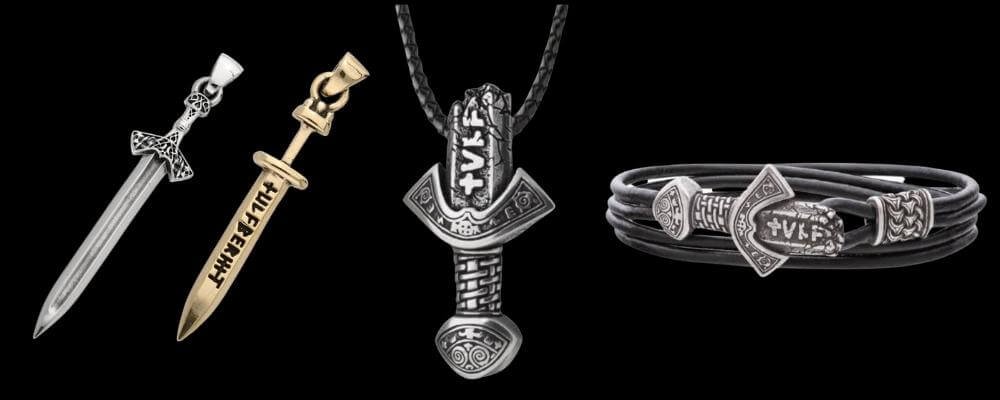Viking Archeology: Are Bog Bodies Evidence of Viking Human Sacrifice?
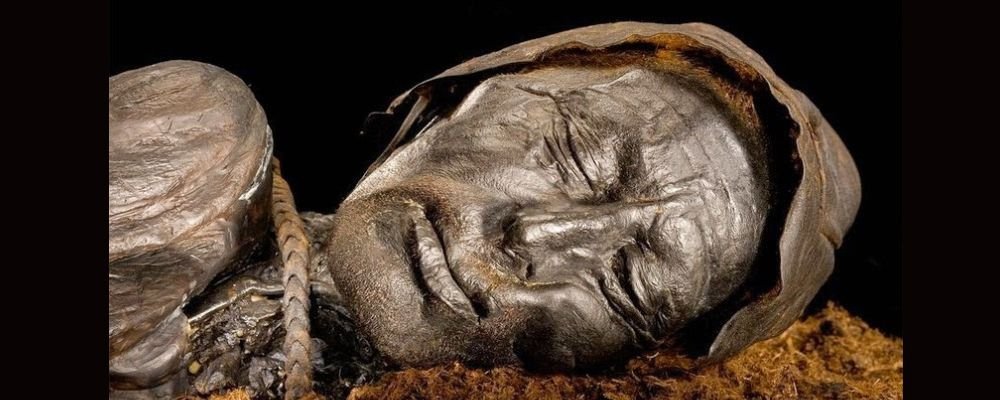
When you read more sensational stories about Viking history, you will often hear tell of barbaric human sacrifices! While there is evidence of occasional human sacrifices among the Vikings in exceptional circumstances, the practice was rare.
It seems primarily to have been associated with kingship. Ahmad ibn Fadlan observed Volga Vikings, a group of Swedish descent living in the east, and describes a woman sacrificed to be buried alongside her dead chieftain. One of the two women found in the Oseberg ship burial also seems to have been of very high status, and perhaps a Volva (witch). The other women buried with her may have been a sacrifice.
The other evidence of human sacrifices among the Vikings is bog bodies, which are bodies that were interred in bogs, which means that in many cases they are well preserved. There is good evidence for other items, such as precious vessels and boats, being placed in bogs as offerings to the gods. It seems that the bodies may have served the same purpose.
But the truth is that bog bodies are a mysterious phenomenon, and they are not exclusive to the Viking age or realm. They are challenging to interpret, so let’s take a look at what we know.

Distribution of Bog Bodies
The disposal of human bodies in bogs was a common tradition across Europe. Examples of these kinds of human remains have been discovered from Crete in the south to Norway in the north and Russia in the east. They are particularly common in Denmark, Norway, the Netherlands, and North Germany, and appear to a lesser extent in Britain and Ireland.
There are over 1,500 bog remains in museum collections today, representing both sexes and a wide range of ages, including babies. They also date, based on carbon dating, from Neolithic to recent times, but most date from around 200 BC to AD 500.
What this tells us is that bog burials were a tradition in a large expanse of northern Europe, particularly in areas where there are a lot of bogs such as Denmark and Norway. It was particularly common in the pre-Viking age when the Viking people were migrating into the Scandinavian land, and what we now think of as Viking culture was being established.
However, while the practice seems to have become less common as we enter the Viking age proper, it doesn’t die out and there are important examples of bog burials from the Viking period.

Viking Age Bog Burials
The literary sources suggest that Bog Burials were known in the Viking age. In the Heimskringla, written by Icelandic author Snorri Sturluson in the 13th century, King Harald Bluetooth of Denmark lured the Norwegian queen Gunnhild to Denmark on the pretext of a marriage alliance. But when she arrived, he instead ritually sacrificed her by drowning her in a bog.
Whether the story is true or not, Sturluson was familiar with the tradition and associated it with the Viking age. He would be unlikely to know about it if it was purely an Iron Age phenomenon. There was no writing in the Norse world in the Iron Age.
Several Viking age big burials have also been discovered. The best preserved is an 11th-century bog burial from Skjoldehamn, which is a coastal region of Arctic Norway. It sits near the border of the Viking and Sami lands. The body, which is probably female, was fully clothed in a colorful woolen costume in Viking style but was wearing Sami-style shoes. This is probably evidence of cultural exchange and that Sami shoes were better for arctic temperatures.
She was also wrapped in a woolen blanket, which was lashed to her using leather straps, decorated with tin rings and woven bands. Her body was laid on top of a reindeer pelt, which was in turn placed on top of a bed of birch sticks. The body was also covered in birch bark. These factors indicate that the burial was deliberate and that the person had some kind of important status.
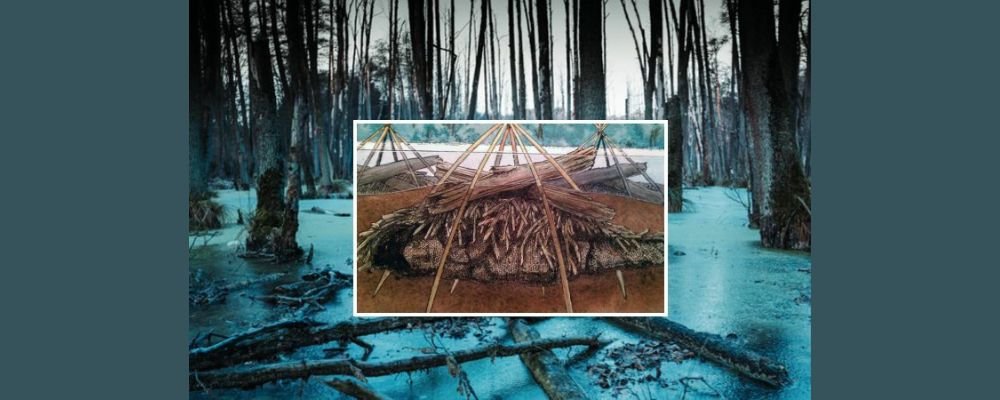
Bog Offerings
But bodies are not the only things that the Vikings placed in bogs. Archaeologists have also retrieved wooden and bronze vessels, weapons, and objects that seem to have been consecrated to the gods. Another common find is a waxy cheese-like substance made from dairy which seems to have been placed deliberately.
In addition to these items, in Norway, more than 40 ships have been found placed in bogs. The best preserved are from Kvalsund. They are a pair, a ship and a smaller boat, dating to the 7th or 8th century. They were clearly offerings because they were carefully placed. A bed of white moss turf, made from pure moss, heather, twigs, and woodchips, was placed under the boats. A similar substance covered the boats. There is also evidence of stones placed around the burial, probably as stepping stones for those doing the work. As well as tools such as oars, interred with the boats were an arrow, a bowl, and a speaking trumpet.
Considering the location of these 40+ boat bog burials along the Norwegian coast, it is difficult not to see these as offerings to the gods, no doubt to ensure good winds and safe journeys. It is noteworthy that the Norwegian Vikings were the explorers of the Viking world. They were the ones who discovered Iceland and Greenland.

Interpretation of Bog Burials
Despite the geographic and temporal distribution of bog burials, they are often interpreted as a single phenomenon.
Until recently, it was suggested that it was a form of execution and burial used for the worst criminals. This stems from a passage in Tacitus’ Germania, in which he shares observations of first-century AD Germanic tribes. He specifically suggests that bog burials were a form of judicial punishment, conducted publicly as a form of ritual sacrifice.
Many of the people buried in bogs seem to have been killed in a brutal fashion or mutilated after death, which lends some credence to this interpretation. The bodies were often strangled, hung, stabbed, sliced, and beaten.
Lindow man, a bog body found in Cheshire in Britain, was a young man who was well groomed. But when he died, he seems to have been kicked in the back to be brought to his need, then garroted, then had his throat slit, his neck broken, and the base of his head hit with a heavy object, before being thrown into the bog with some breath still in his lungs.
Two Irish bog bodies, known as Oldcroghan Man and Clinycavan Man, both seem to have had their bodies mutilated after death, including having their nipples cut off.
But are these extremes evidence of punishment or ritual?

Big Burials as Sacrifices to the Gods
There is a pre-Viking age bog burial from Silkeborg, in the Jutland region of Denmark, known as Tollund Man. The body was found wearing a hat and belt, but no other clothing, and with a plaited leather thong wrapped tightly around his neck.
While the man does seem to have been hung, the leather around his neck was not the weapon and seems to have been placed there after he died.
This is interesting since the Gundestrup Cauldron, a pre-Viking artifact that was interred in a Danish bog near several bodies, shows a series of goddesses. All wear similar decorations around their necks and headdresses. This suggests that the man’s cap and the leather around his neck may have been part of a sacrificial costume.
Peter Vilhelm Glob, who was a professor of archaeology at Aarhus, wrote a book called The Bog People in 1965, in which he takes apart the idea of bog burials and criminal punishment and reframes them as ritual sacrifices.
He suggests that the sacrifices were made to Nerthus, the Earth Mother in Norse and Germanic religions. Bogs were chosen because they were special places that represented the intersection of land and water. They may also have been open spaces in heavily forested areas, representing a portal for communication between men below and the gods above. The gas caused by the rotting vegetation around bogs can also result in some fairly impressive fogs and lights.
The evidence suggests that most bog bodies were buried at the end of winter or in early spring. This is because the mouth and stomach contents of the bodies include things such as barley, linseed, and knotweed, rather than berries or apples. This is the period of the new harvest, and therefore a time to make sacrifices to fertility deities.
Interestingly, the Norwegian ship burials seem to have been buried at the end of spring or the start of summer, which was also the start of the sailing season!
Another Norwegian bog burial, from Bo in Rogaland, has produced four infant skulls. No other bones have been recovered from the burial, suggesting that the body parts were selected and deliberately placed. It also seems likely that they were all interred at the same time.
It is hard to reconcile this bog burial with the idea of criminal punishment. It is less difficult to imagine a sickness taking several children from the community at around the same time, and a ritual being conducted to help prevent something similar from happening in the future.

Final Thoughts
Bog burials are an enticing archaeological phenomenon. Some of the bodies that are retrieved almost look alive, like the person is just sleeping. It is like looking into the face of someone from history, and you want to know about their lives. But sadly, the surviving evidence actually tells us very little.
What we can say is that bogs were considered sacred places for centuries before the Viking age and during it. This makes sense since the Vikings often chose spaces in nature as their sacred spaces.
Many things were placed into bogs, from small artifacts to big ships to human bodies. There seem to have been a lot of rituals involved in their placement, suggesting deliberate acts that had some kind of cultural importance.
The humans placed in bogs vary greatly. There are men and women, and infants. Some seem to have been killed specifically for the purpose of being placed in the bog, while others seem already to have died. The items that were placed with them varied greatly, but none of the bodies were burned, which was uncommon. This suggests that they knew that whatever they placed there would be preserved.
It is difficult to understand why a community would want to ritually preserve the body of a criminal. This pushes us toward the idea that something about these bodies was sacred, therefore suggesting that they were offerings to the gods.
Perhaps criminals that were thought to have muddied their “souls” could agree to be sacrificed to redeem themselves for the afterlife.
Viking warriors that were wealthy enough to own swords were often buried with them, but the sword was bent to discourage grave robbing. Check out some of the sword pieces in the VKNG collection.
The post <strong>Are Bog Bodies Evidence of Viking Human Sacrifice?</strong> appeared first on Norse and Viking Mythology.
Viking Archeology: The Vikings’ Metal Discoveries: Opening the Tricks of the Past

The Viking Age, which covered from the late 8th to the mid-11th century, was a time of great expedition and innovation for the Norse individuals. Amongst the numerous amazing achievements of this period was the Vikings’ discovery of different metals and their mastery of metalworking methods. Through their metal discoveries, the Vikings opened the secrets of the past, developed new weapons and tools, and paved the
way for modern-day metallurgy. Iron was one of the most essential metals found by the Vikings. They discovered iron ore in numerous locations, consisting of Sweden, Norway, and Iceland. The Vikings learned to draw out the iron from the ore by warming it in a heater with charcoal. This produced a substance called wrought iron, which might be formed and solidified through forging. The Vikings utilized wrought iron to develop weapons such as swords, spears, and axes, as well as tools such as hammers and rakes.
Another important metal discovery of the Vikings was silver. They discovered silver deposits in Norway, Sweden, and Denmark, and ended up being proficient at drawing out the metal from the ore utilizing a process called cupellation. This involved melting the ore with lead and other substances to separate the silver from the impurities. The Vikings utilized silver to create precious jewelry, decorative items, and coins.

 Gold was likewise a precious metal discovered by the Vikings. They discovered gold in numerous kinds, consisting of nuggets, dust, and ornaments. The Vikings utilized gold to create highly elaborate jewelry and other items, typically including symbolic motifs and elaborate designs.
Gold was likewise a precious metal discovered by the Vikings. They discovered gold in numerous kinds, consisting of nuggets, dust, and ornaments. The Vikings utilized gold to create highly elaborate jewelry and other items, typically including symbolic motifs and elaborate designs.
In addition to these metals, the Vikings likewise discovered bronze, a metal alloy made from copper and tin. They used bronze to develop a range of things, consisting of weapons, tools, and ornamental items. Bronze was specifically important for the Vikings’ shipbuilding efforts, as it was used to create nails, rivets, and other hardware.
The Vikings’ metal discoveries and mastery of metalworking strategies were a crucial consider their success as a civilization. Their tools and weapons gave them a military advantage, while their precious jewelry and other ornamental items showed their wealth and cultural elegance. The Vikings’ metalworking tradition continues to affect contemporary metallurgy and inspire brand-new developments in the field.
Works Cited:
” The Vikings and Metals.” Science Museum Group. https://group.sciencemuseum.org.uk/our-work/research-and-collections/vikings-and-metals/.
” The Viking Age.” National Museum of Denmark. https://en.natmus.dk/historical-knowledge/denmark/prehistoric-period-until-1050-ad/the-viking-age/.
” Wrought Iron.” Viking Response Lady. http://www.vikinganswerlady.com/iron.shtml.

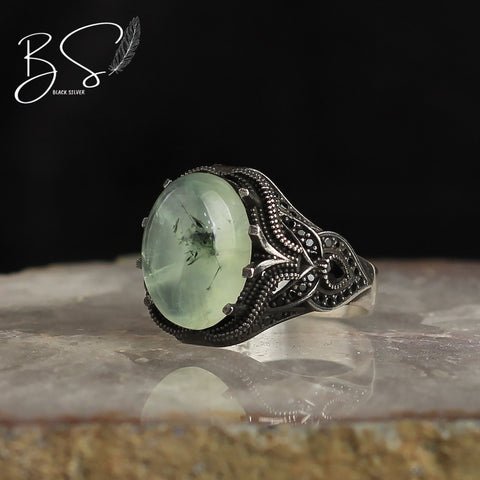

Viking Watches
Iron was one of the most essential metals discovered by the Vikings. In addition to these metals, the Vikings likewise found bronze, a metal alloy made from copper and tin. Iron was one of the most essential metals found by the Vikings. Another crucial metal discovery of the Vikings was silver. In addition to these metals, the Vikings likewise discovered bronze, a metal alloy made from copper and tin.
Viking Archeology: Norse Vikings Gender Equality and the Division of Labor
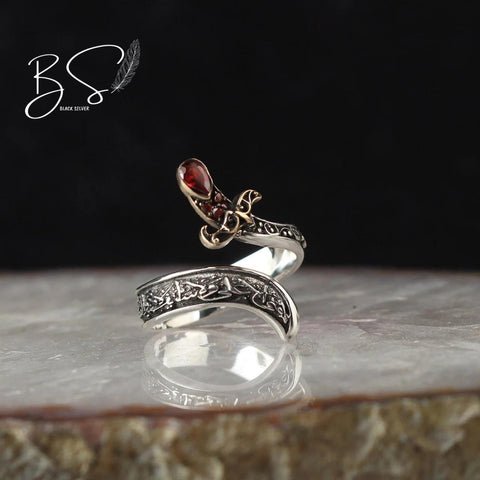
The Norse Vikings, who lived in the Scandinavian area during the Viking Age (793-1066 ADVERTISEMENT), are frequently represented as a society controlled by guys who went on raids, fought fights, and conducted trade. Recent research has revealed that the Vikings had a more intricate social structure, where females played essential functions in various spheres of life, and gender equality was more prevalent than in other contemporary societies. This post will take a look at the evidence for Norse Vikings gender equality and the department of labor.
Women’s Roles in Norse Society
Contrary to the popular picture of Viking females as passive and submissive, females had considerable functions in Norse society. Females might inherit and own residential or commercial property, take part in business, and participate in religious ceremonies. The legends, which are a collection of mythical and historical stories about the Vikings, frequently illustrate women as strong and independent figures, who might make their own decisions and act as leaders. Queen Gunnhild, who ruled Norway in the 10th century, was understood for her political skill and military prowess.
Females were likewise associated with agriculture and domestic work. They tended to the livestock, cultivated crops, and processed food. The legends describe how women made cheese, butter, and bread, and brewed beer. Females also made clothes, which was a crucial aspect of Viking society, as clothes served as a kind of wealth and status. Women might also participate in crafts such as jewelry-making and embroidery, which were highly valued abilities.
Gender Equality in Norse Society
The evidence recommends that the Vikings had a reasonably high degree of gender equality compared to other modern societies. One indication of this is that ladies might divorce their spouses and retain their residential or commercial property, which was unusual for the time. Ladies also had legal security against sexual violence and could take legal action versus their attackers.
Another indicator of gender equality is the reality that females had access to education and could check out and compose. The legends discuss several females who were literate and might compose poetry, which was an extremely respected ability. Ladies might likewise participate in spiritual events and could become priestesses, which was a significant function in Norse society.
Department of Labor in Norse Society
The division of labor in Norse society was based on a mix of gender and age. Male were responsible for warfare, hunting, and fishing, while ladies was accountable for agriculture, domestic work, and crafts. This division was not absolute, and there was some overlap in between males’s and females’s functions. Males might assist with domestic work and get involved in crafts such as woodworking and metalworking, while females might accompany men on hunting and fishing explorations.
One interesting aspect of Norse society is the reality that ladies could take on traditionally male functions in exceptional circumstances. For example, if a guy was too ill or too old to work, his better half or child might take over his duties. If a guy was away on a long trip or on a raid, his spouse could manage his affairs and make choices in his absence.
Conclusion
The evidence recommends that Norse Vikings gender equality and the department of labor were more intricate than previously believed. Women played substantial roles in various spheres of life, and gender equality was more widespread than in other contemporary societies. While there were distinctions in men’s and ladies’s roles, there was also some overlap and flexibility, which allowed for women to take on generally male roles in extraordinary circumstances. The Norse Vikings’ gender characteristics challenge the simple view of a patriarchal and male-dominated society and offer a more nuanced understanding of the diversity of human experience.
Functions Cited:
-
Byock, Jesse. Viking Age Iceland. Penguin Books, 2001.
-
Jesch, Judith. Ladies in the Viking Age. Boydell Press, 1991.
-
Cost


Thor Collection
Contrary to the popular image of Viking females as passive and submissive, ladies had considerable roles in Norse society. One fascinating element of Norse society is the fact that ladies could take on traditionally male roles in remarkable circumstances. While there were differences in men’s and women’s functions, there was also some overlap and flexibility, which enabled for ladies to take on generally male roles in remarkable situations. Contrary to the popular image of Viking females as passive and submissive, women had substantial functions in Norse society. While there were differences in guys’s and ladies’s functions, there was also some overlap and versatility, which allowed for ladies to take on traditionally male roles in remarkable scenarios.
Viking Archeology: 10 True but outrageous Viking Truths
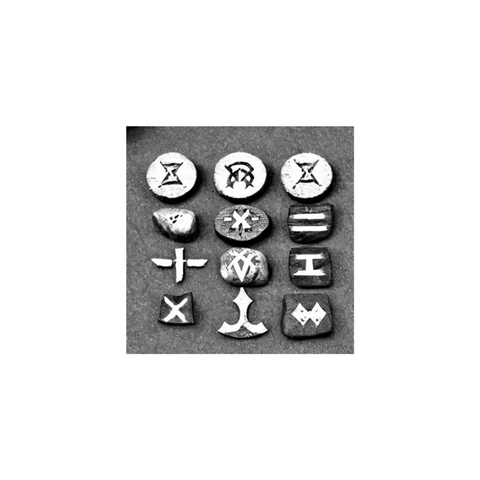
Vikings have long caught the creativity of people around the world, with their strong track record as warriors and explorers. Beyond the popular image of horned helmets and raiding parties, there are lots of surprising and obscure facts about these interesting historical figures. Here are 10 true however outrageous Viking truths:

-
 Vikings were knowledgeable metalworkers, understood for their elaborate precious jewelry, weapons, and armor. They used a variety of strategies, including filigree and granulation, to produce gorgeous and resilient items.
Vikings were knowledgeable metalworkers, understood for their elaborate precious jewelry, weapons, and armor. They used a variety of strategies, including filigree and granulation, to produce gorgeous and resilient items. -
Vikings had a strong custom of storytelling and poetry, and many of their myths and stories have made it through to this day. The most popular of these is most likely the epic poem Beowulf, which tells the story of a hero fighting beasts and dragons.
-
Vikings were understood for their hygiene and individual grooming practices. They bathed regularly, utilized razors and combs to keep their hair and beards neat, and even had an unique kind of soap made from ash and urine.
-
When it came to gender roles, vikings were surprisingly egalitarian. Women had more rights and liberties than in many other cultures at the time, and some even served as warriors or chieftains.
-
Vikings were skilled navigators and sailors, utilizing the sun, stars, and currents to assist their longships across the seas. They also constructed lighthouses and used landmarks to help them browse.
-
Vikings were devoted traders, and their goods and wares traveled everywhere. They sold everything from furs and textiles to precious metals and spices, and had contact with cultures as far away as China and Africa.
-
Vikings thought in a complex system of goddesses and gods, with Odin, Thor, and Freyja being among the most important. They also thought in an afterlife, and buried their dead with weapons and other objects to prepare them for the journey to the next world.
-
Vikings were competent farmers and fishermen, and had the ability to thrive in a few of the harshest environments on earth. They utilized innovative methods such as crop rotation and irrigation to grow crops, and established a variety of fishing techniques to gather the bounty of the seas.
-
Vikings were likewise understood for their love of video games and sports. They played a range of parlor game and dice games, and likewise took part in more exercises like wrestling, sword battling, and archery.
-
Vikings was accountable for the development of among the earliest known democratic assemblies, called the Althing. This gathering of representatives and chieftains fulfilled every year to make laws and settle disputes, and was a groundbreaking example of democratic governance.
These 10 outrageous however real Viking realities only scratch the surface of the abundant and complicated history of this interesting culture. From their impressive accomplishments in science, expedition, and art to their enduring tradition in modern society, the Vikings continue to mesmerize and influence us today.
Functions Cited:
- ” 10 Realities about Viking Culture.” History.com, A&E Tv Networks, 10 Nov. 2016, www.history.com/news/10-things-you-may-not-know-about-the-vikings.
- Jesch, Judith. “Viking Poetry: The Poetics of Oral Custom.” Oxford Handbooks Online, 2017, doi: 10.1093/ oxfordhb/9780199935340.013.33.
- Price, Neil. The Viking World. Routledge, 2008.
- Roesdahl, Else. The Vikings. Penguin Books, 1998.
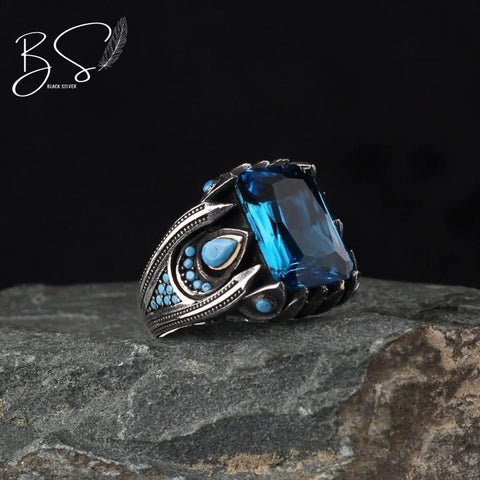
Vikings were also known for their love of video games and sports. Vikings were responsible for the production of one of the earliest recognized democratic assemblies, understood as the Althing. Vikings were skilled navigators and sailors, using the sun, stars, and currents to guide their longships across the seas. Vikings were also understood for their love of sports and video games. Vikings were accountable for the creation of one of the earliest recognized democratic assemblies, known as the Althing.
Viking Archeology: Jomsvikings: famous Viking mercenaries or males of misconception?
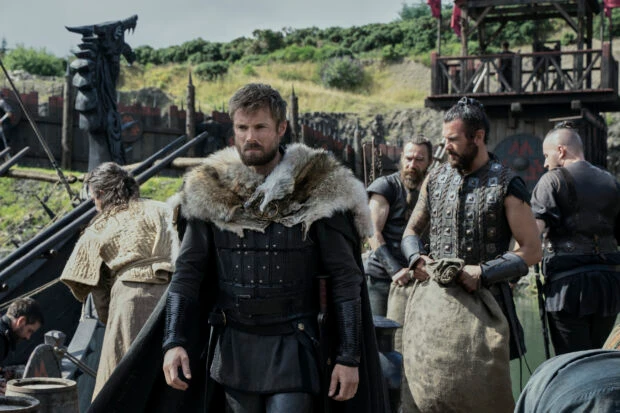
< img height=" 266" src=" https://everythingviking.com/wp-content/uploads/2023/04/viking-archeology-jomsvikings-legendary-viking-mercenaries-or-men-of-myth.webp" width=
Viking Archeology: A Day in the Life of a Viking Female

A Day in the Life of a Viking Lady< img src =" https://everythingviking.com/wp-content/uploads/2023/04/viking-archeology-a-day-in-the-life-of-a-viking-woman.jpg" alt =" Viking Lady with Axe- The Viking Dragon
Blog “design=”float: none;” > The Middle Ages were not a simple time to be a lady. For a society that’s gone down in history for its raids and invasions, you might believe that Viking ladies would have had little power over their menfolk. On the contrary, Norse society was among the most equal in Europe, affording females substantial power over different elements of life. Of the Viking women you might have found out about previously, most are most likely great queens or legendary heroines. While the legendary Valkyries, fighters like Lagerta or Freydis and the spectacular Oseberg Queens definitely lead remarkable lives( and might even deserve their own post), let’s look right now at the life of the average Viking female. Meet Bodil, a Viking woman living in the Orkney Islands during the 10th century. Let’s take a look at a day in her life
to
see what responsibilities, opportunities and
problems women like her faced in Norse society. The Mistress of the Farm We meet Bodil one morning in early summertime. Her spouse has just recently left on a trading trip to Ireland, leaving her in charge of the farm. Her boys will work the land in his absence, while she’ll take responsibility for the animals. Hence, her first job of the day is in the cow shed, a small outbuilding next to the longhouse. She milks her modest herd and takes the fruit and vegetables
to the dairy next door where the morning’s labour starts in earnest. Dairy products made up a substantial part of the Viking diet plan, and it’s likely that making yoghurt, butter and cheese was mostly a lady’s duty. While she churns the milk to make butter, she instructs her child on how to draw out the whey from the milk by warming it in a pan, the primary step in the five-week procedure of making cheese. As a mother, it is necessary that she teaches her daughter how to run a farm herself one day. Afterall, she might be wed in simply a couple of short years.
On her method back to the longhouse, Bodil stops to collect honey from the beehive in the eaves on the tool shed. She can keep that honey to trade with a young couple who are getting wed in the Fall. They’ll need as much as they can get their hands on if they’re going to have sufficient mead to walk around the entire town.
The Homemaker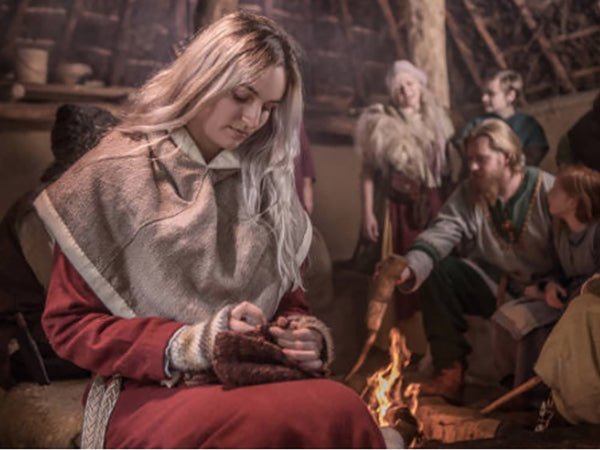 Most of a lady’s time during the Viking age was invested in the house. A common Viking longhouse included one single space, where all the day’s activities, from cooking to sleeping to socialising, would be carried out side-by-side. When Bodil go back to the longhouse, her mother-in-law is preparing the meat and vegetables for the evening stew.
Most of a lady’s time during the Viking age was invested in the house. A common Viking longhouse included one single space, where all the day’s activities, from cooking to sleeping to socialising, would be carried out side-by-side. When Bodil go back to the longhouse, her mother-in-law is preparing the meat and vegetables for the evening stew.
With food currently being looked after, Bodil devotes the next few hours to the task of spinning wool from their flock of sheep into yarn. She takes the rough wool, which she cleaned up and dried the day previously, and spins it into yarn utilizing a spindle stick. Later, she can weave this yarn into woollen cloth on a loom or knit it into small garments like socks. Fabric making was among the primary duties of a Viking lady, and it might be extremely labour-intensive.
Alongside wool, the main fabric that needed to be produced was linen, which was hand beaten from flax seeds into dangers which might then be woven into a fabric. She can purchase or trade a few more complex items, such as tools or shoes, from craftsmens in the town, nearly whatever that Bodil and her family usage in their daily lives are made at house. It’s a great deal of work, so she’s delighted she has her daughter and mother-in-law around to assist her. Females in Society< img src=" https://everythingviking.com/wp-content/uploads/2023/04/viking-archeology-a-day-in-the-life-of-a-viking-woman-2.jpg
”
alt=” Viking Woman Next to River-
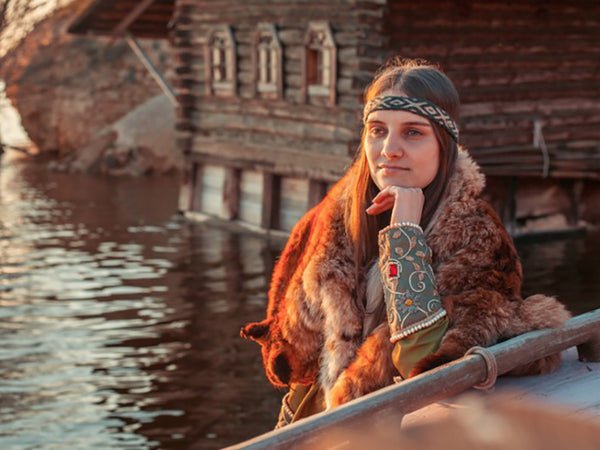
The Viking Dragon Blog “design=” float: none;” > When evening begins to fall, Bodil’s friend Solveig and her daughter come by for a catch-up. The ladies are sent out into the woods to collect fruits and berries, while the females being in front of the hearth, get started on some light sewing, and spend time together as buddies.
The two satisfied years back on the ship from Norway when their families rooted out from Scandinavia to find more fertile farmland than was offered in their mountainous house area. Historians had actually formerly thought that only Viking males took part in voyages, we know now that it was not uncommon for entire families to migrate across the seas, kids and females included.
Solveig has actually been going through a tough spot just recently. Having actually separated her spouse just a month back, she and her children were now living with her brother till he could discover an appropriate male for her to remarry. Compared to other areas of Europe, Viking ladies were quite powerful in that they might request to leave their husbands just by calling a witness to their house and declaring that they wanted a divorce. The marital relationship contract typically stated how their property would be divided in such a case, and some women were even able to claim back their dowries.
A
Mom and Educator
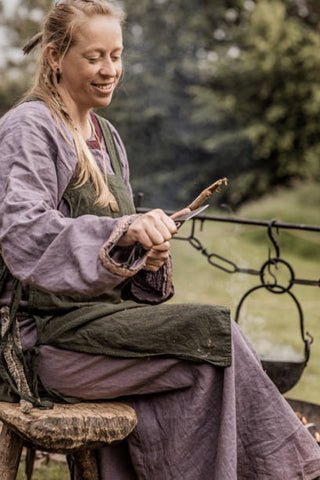
< img
src=” https://everythingviking.com/wp-content/uploads/2023/04/viking-archeology-a-day-in-the-life-of-a-viking-woman-3.jpg” alt =” Viking Female Preparing Food -The Viking Dragon Blog” design=” float: none;” > Evening is household time in Bodil’s home. As the women of the household, she and her mother-in-law share an important role as the moral and spiritual leaders of the family. With her children gathered around the fire, she tells stories about the Norse gods and Viking heroes. Norse males and females had a big pantheon of gods to bear in mind, along with a litany of other supernatural beings, so teaching the more youthful generation the important stories and beliefs of the neighborhood was a vital task for a mom.
While males are better known as storytellers in the Viking age through the cultural contributions of Skalds (bards), Viking ladies were likewise knowledgeable writers as they kept the oral tradition alive in the home. That’s not to say that there were not female skalds alongside their male counterparts, but as females’s main domain was in the home, the home is where you’ll find the typical Viking woman bending her storytelling muscles.
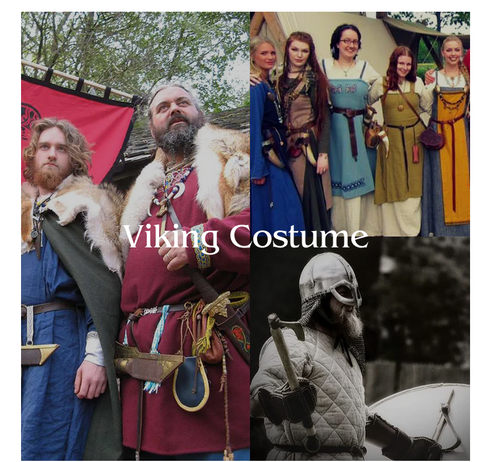

 The Middle Ages were not an easy time to be a female.
The Middle Ages were not an easy time to be a female. Most of a female’s time throughout the Viking age was spent in the home.
 When night starts to fall, Bodil’s good friend Solveig and her child come over for a catch-up.
When night starts to fall, Bodil’s good friend Solveig and her child come over for a catch-up. Most of a lady’s time during the Viking age was invested in the house.< img
Most of a lady’s time during the Viking age was invested in the house.< img
src=” https://everythingviking.com/wp-content/uploads/2023/04/viking-archeology-a-day-in-the-life-of-a-viking-woman-3.jpg” alt =” Viking Lady Preparing Food -The Viking Dragon Blog site” design=” float: none;” > Evening is household time in Bodil’s home.
Viking Archeology: Viking Funeral Services – Beyond the Burning Ship

Viking Funeral services: Beyond the Burning Ship Image a blazing ship set adrift into the inky North Sea, carrying the body of some excellent and noble warlord.’ Viking funerals’ like these might be among the first things that you imagine when you think about Middle ages Norse culture.
Such a powerful mental image does seem befitting of the effective Viking tradition. Nevertheless, as stirring an image as it may be (and as good as it might look on a movie theater screen), the’ Viking Funeral ‘was not the flaming longboat affair that’s typically portrayed in storybooks. Unlike what Hollywood might have us think, we can’t truly talk about ‘Viking Funerals ‘as a monolith. Practices differed across areas and centuries and in between abundant and poor members of society. By gathering specific threads of evidence from archaeological sites, tourists and legends’ accounts, historians have actually had the ability to develop a tapestry of what Norse funeral services probably looked like, and it’s not exactly what you may expect.
< img
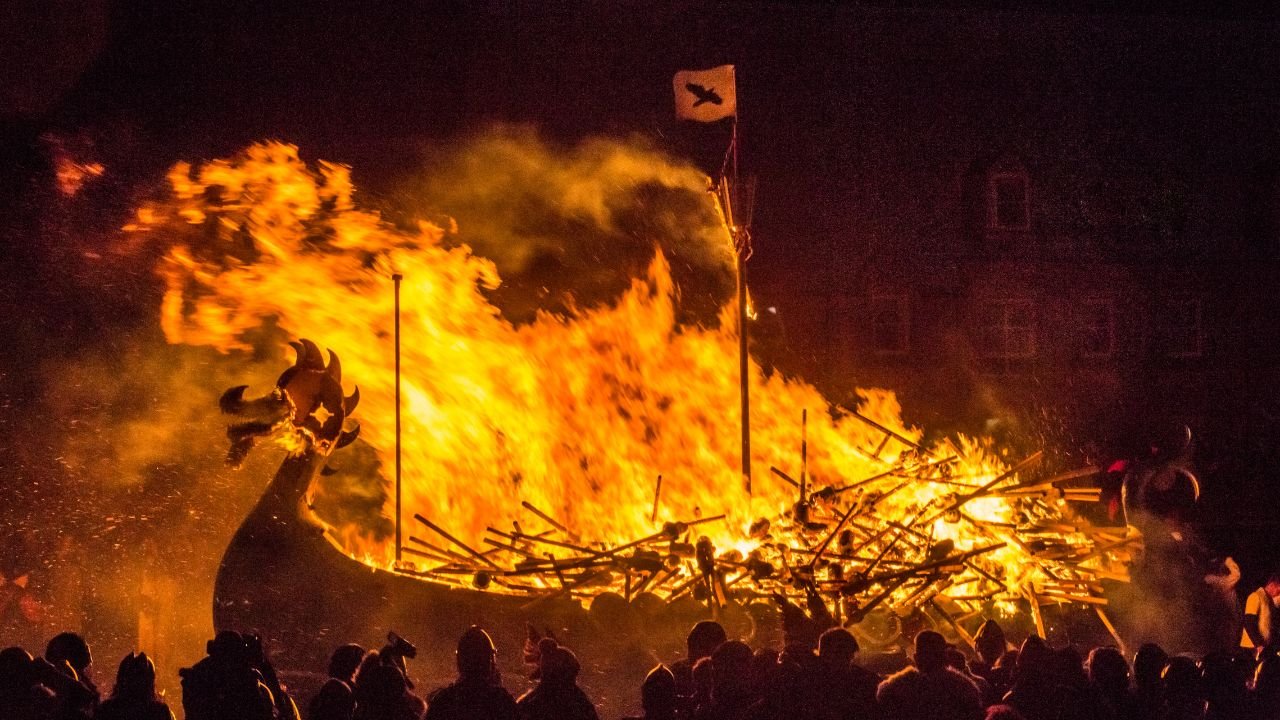
src =” https://everythingviking.com/wp-content/uploads/2023/04/viking-archeology-viking-funerals-beyond-the-burning-ship.jpg” alt =” Viking Longship- Ablaze- The Viking Dragon Blog” design=” float: none;” width =” 600″ > The Deathof Baldr Prior to we talk about what Viking Funeral services entailed, let’s get the big blazing mistaken belief out of the way. No, as remarkable as they are to enjoy in movies, Viking Funeral services did not involve a longship being set on fire and cast out into the ocean like a drifting crematorium. What we’re explaining here is the funeral service of Baldr, the boy of Odin and Frigg. After being killed by Loki with a dart made from a mistletoe branch, Baldr’s body was carried to the shore on Odin’s horse, where it was laid to rest on a mighty longship named Hringhorni. His spouse, Nanna, who died of grief right there on the spot, was laid beside him on a funeral pyre on the decks of the ship. Odin offered his boy a gold armband, whispered a couple of words into his ear, and the flaming ship was sent to sea.
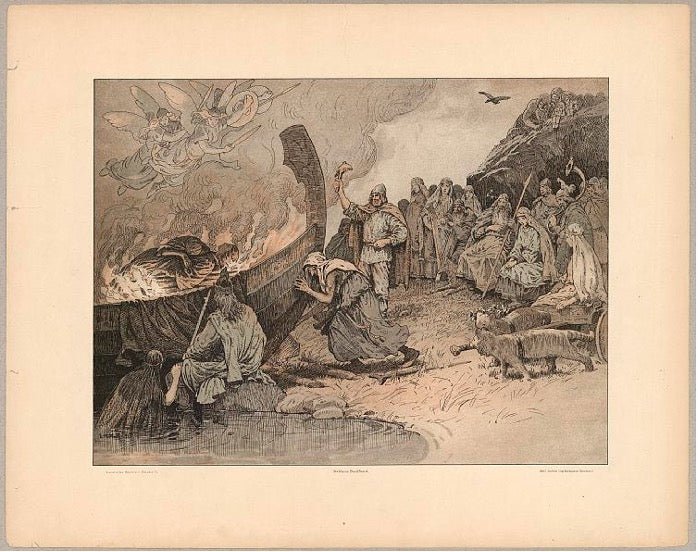
< img
src= “https://everythingviking.com/wp-content/uploads/2023/04/viking-archeology-viking-funerals-beyond-the-burning-ship-1.jpg” alt=” Baldr’s Funeral service- Pressing the Boat out to Sea -The Viking Dragon Blog “style =” float: none;” width =” 600″ > This is clearly a really powerful story, however it explains the final rites of a God, not a mortal male. Even the funeral services of noblemen in the Viking Age would not have included the drama of a flaming longship drifting away from a pack of mourners on the beach. Though popular in stories today, the stereotypical’ Viking Funeral service ‘is a work
of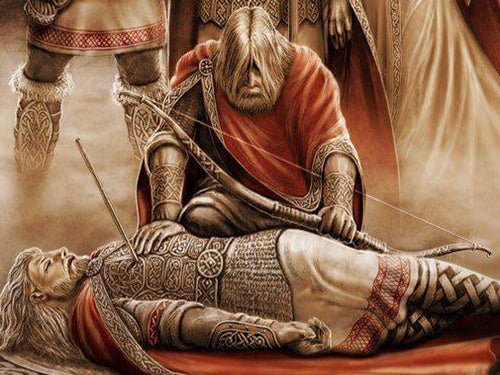
fiction.< img src="
https://everythingviking.com/wp-content/uploads/2023/04/viking-archeology-viking-funerals-beyond-the-burning-ship-2.jpg” alt=” The Death of Baldr- The Viking Dragon Blog “width=” 600″ > Cremations and burials Vikings said goodbye to the body of a loved-one in two primary methods: burial and cremation. Cremation was favoured by early Vikings, who believed that the fire’s smoke would bring the deceased’s spirit to the afterlife. As soon as cremated, the remains were normally buried in an urn. The existence of a funeral pyre might advise you of the Hollywood Viking Funeral service, in truth, such affairs were strictly land-based.
As the centuries endured, cremation was gradually changed with burial as the main funerary technique. Tomb varied greatly to reflect the significance of the deceased within the neighborhood, ranging from shallow graves for the lowest-class women and children to enormous burial mounds for the most affluent and most effective Vikings. The biggest known burial mound is the North Mound in Jelling, Denmark, which was constructed to be the last resting location of King Gorm the Old. Measuring over 10 metres high, it would have taken numerous guys several days to build, reflecting the importance of the king and the reverence booked for him even after death. The late king’s boy, Harald Bluetooth, who had actually the mound developed, likewise had a stake in its remarkable stature. After all, any new ruler would wish to stress his father’s power now that said power had actually been passed on to him.
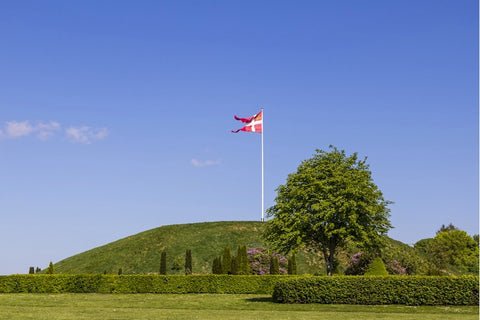
Of Burials and boats
Hollywood’s burning longship funeral services might be a work of fiction, there is a kernel of reality in what we see on the silver screen. Boats have actually been discovered at Viking funeral service websites all over Scandinavia, irrespective of whether the deceased was cremated or buried. A reputable member of the community throughout what has actually been called the ‘burning age’ might have been cremated on a funeral pyre on the decks of a ship, which was then buried underneath a burial mound. When burials became more popular, the body was typically put to rest upon the decks, before the whole was covered by earth and soil. Numerous of our best-preserved examples of longships have actually been those discovered at burial sites. The Oseberg Ship, a tremendous vessel with elaborate carvings and area for 30 oarsmen, was found as the final resting place of 2 Viking females. Though we do not know who they were, we can only think that they were extremely essential spiritual or politicians to warrant such an extravagant burial place.
Even when the body was not buried with a real longship, the image of a boat might be invoked around their burial mound using what has been called ‘ship settings.’ This practice involved creating the summary of a ship around the severe website utilizing stones or boulders. The largest example of a ship setting is, again, at Jelling. Gorm the Old’s tomb was surrounded by pillars in the shape of a massive longship, measuring 360 metres from nose to tail.
< img

src=” https://everythingviking.com/wp-content/uploads/2023/04/viking-archeology-viking-funerals-beyond-the-burning-ship-4.jpg “alt=
” Viking Warrior Costume at The Viking Dragon- Viking Dragon Blog” design =” float: none;” > Tomb Item The vastness of their burial ship isn’t the only reason we know the Oseberg females were rich. They were also put to rest with a treasure trove of riches, consisting of everything from great accessories and clothes, to livestock, to sailing equipment.
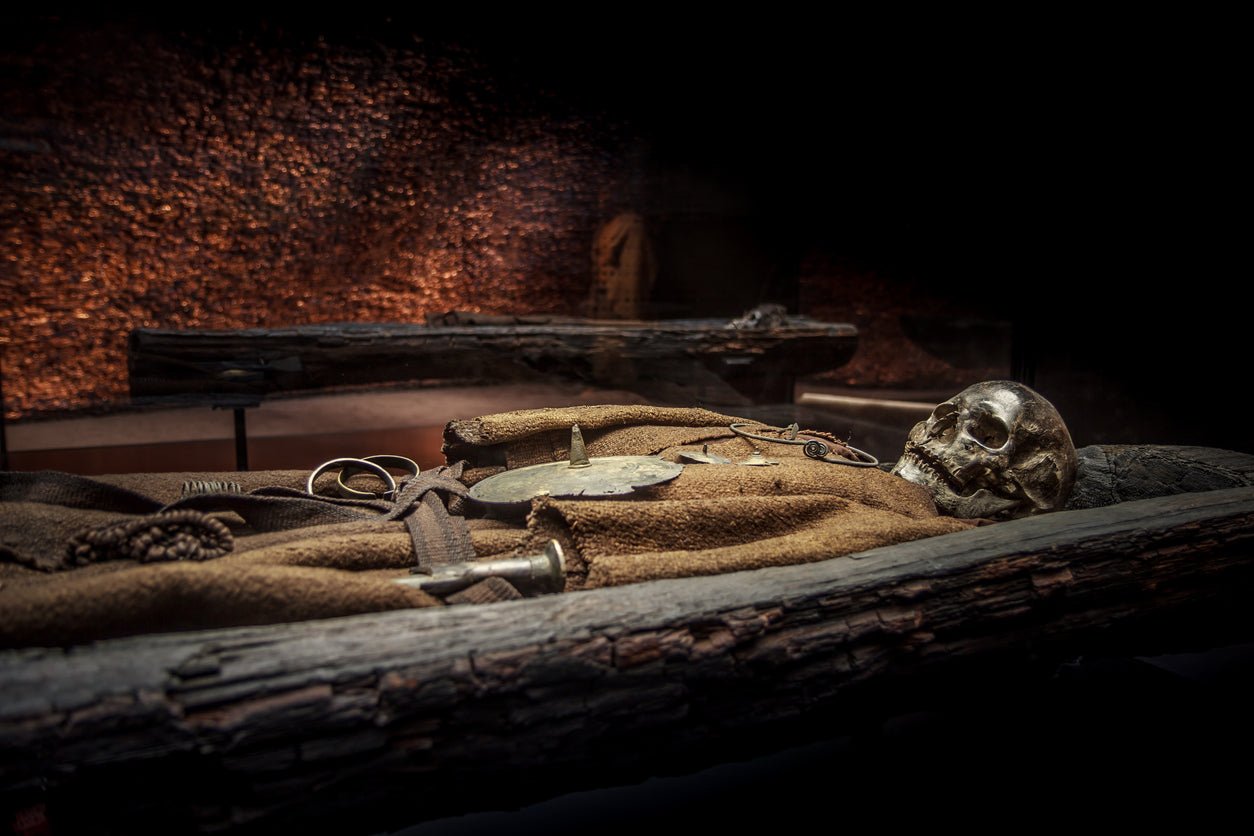
 Tomb items were an essential part of a Viking burial. Medieval Scandinavian were dispatched to the afterlife with whatever that they might require on their journey, be that useful equipment or great clothing. Guy were typically buried with weapons, tools and even video gaming sets, whereas a female’s loot was more likely to consist of clothing, jewellery and textiles. Slaves and animals may likewise have been included. The most well-known account of a Viking funeral service, discovered in the journal of an Islamic visitor named Ahmad ibn Fadlan, tells of a Viking chieftain being cremated on the decks of a longship surrounded by food, drink, animals, devices, weapons and even a female servant to serve him in the afterlife.
Tomb items were an essential part of a Viking burial. Medieval Scandinavian were dispatched to the afterlife with whatever that they might require on their journey, be that useful equipment or great clothing. Guy were typically buried with weapons, tools and even video gaming sets, whereas a female’s loot was more likely to consist of clothing, jewellery and textiles. Slaves and animals may likewise have been included. The most well-known account of a Viking funeral service, discovered in the journal of an Islamic visitor named Ahmad ibn Fadlan, tells of a Viking chieftain being cremated on the decks of a longship surrounded by food, drink, animals, devices, weapons and even a female servant to serve him in the afterlife.


Christian Burials Though King Gorm was initially entombed underneath his enormous burial mound, this would not be his final resting place. When his kid transformed to Christianity, Gorm was exhumed and reburied underneath Jelling church and a magnificent rune stone with an inscription of Jesus was set up in his honour.
There’s proof that the elaborate Viking funeral service became simpler as Christianity crept across Scandinavia. As the new religion took hold, funerals combined both Norse and Christian practices. Early Christian funerals still in some cases featured severe items, though these were typically less and more useful than the riches of times passed. Laying the deceased to rest on the decks of a ship also fell out of fashion and burial strongly took hold over cremation as the funerary technique of choice. It was around this time that rune stones began popping up all over Scandinavia to honour the dead and tell of their achievements, comparable to how we may utilize a gravestone today.
The presence of a funeral pyre might remind you of the Hollywood Viking Funeral service, in reality, such affairs were strictly land-based. Tomb goods were a staple part of a Viking burial. The most famous account
of a Viking funeralFuneral service found discovered the diary of an Islamic traveller tourist Ahmad ibn Fadlan, tells informs a Viking chieftain being cremated on the decks of a longship surrounded by food, drinkBeverage animals, accessories, weapons and even a female slave servant serve him in the afterlife. Christian Burials Though King Gorm was originally entombed below his huge burial mound, this would not be his final resting place.
Christian Burials Though King Gorm was originally entombed below his huge burial mound, this would not be his final resting place. Grave products were a staple part of a Viking burial.
Grave products were a staple part of a Viking burial.
Viking Archeology: Viking Longships

Viking Longships: All you need to know As outstanding seafarers, explorers, merchants, and raiders, much of the Vikings’ legacy today would not have been possible without the assistance of longships. The longship was the secret to the Vikings’ success: the tool with which they turned into one of the dominant forces from the Arctic Ocean to the Caspian Sea. Even to this day the longship is among the most recognisable symbols of mediaeval Nordic civilisation, adorning everything from company logo designs to city shields. How much do we understand about these remarkable vessels and how are we able to separate the mythological from the historic? Well, thanks to some extraordinary historical sources and historical finds composed by both Vikings and their contemporaries, historians have actually been able to piece together an image of how longships were made, what they were utilized for and the place they kept in Viking society.
The Anatomy of a Longship
Let’s start by discussing what longships are and how they vary from any other type of vessel used by the Vikings and their contemporaries. Archaeologists understand they have actually found a ‘real Longship’ when it’s at least five times as long as it is large and has both a mast to mount a sail and rows of benches for a team of oarsmen. They’re characteristically long and thin, with a shallow hull and a totally in proportion bow and stern. These ships were built using the clinker method, which had been utilized in Scandinavia because the 6th century. This technique reduces the internal framing of a ship by developing the hull from overlapping wooden slabs and filling the gaps with a mix of tar and wool, animal or moss hair.
Archaeologists have found proof of long, narrow ships being utilized in Scandinavia as early as the fourth century BCE, so why do we speak about ‘Real Longships’ emerging in the 9th century, around the dawn of the Viking age? Crucially, those earliest ships didn’t combine using wind and oar power, implying that they didn’t have the speed and agility that gave the Vikings such a maritime advantage over other civilisations of their day. Ships dating from prior to the 6th century likewise utilize a range of structure methods rather than being strictly clinker-built, suggesting that they were heavier and had less capability for manoeuvrability.
The Secret to the Vikings’ Success
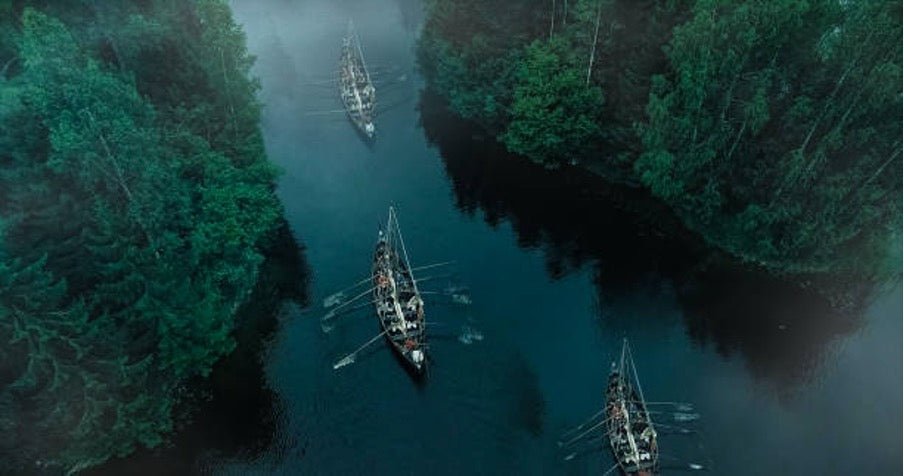
 Everything about the longship was created to help with nimble, vibrant movement through the water. Other civilisations of the day also used clinker-built, longship-type vessels, the capability of Viking longships to move so exactly around a headland or navigate deep inland through a river system offered the Vikings a clear advantage over their neighbours. Integrating 2 methods of manpower, propulsion, and wind, indicated that a longship might take a trip at 5-10 knots (9.3-18.5 kmph) in average conditions, and might even reach speeds of approximately 15 knots (28 kmph) in beneficial conditions. This raw speed integrated with the manoeuvrability provided by the symmetrical design, which permitted longships to change direction at a minute’s notification, indicated that Viking raiding teams could approach a coastal settlement quickly and from an obscured angle so that they would not be immediately found.
Everything about the longship was created to help with nimble, vibrant movement through the water. Other civilisations of the day also used clinker-built, longship-type vessels, the capability of Viking longships to move so exactly around a headland or navigate deep inland through a river system offered the Vikings a clear advantage over their neighbours. Integrating 2 methods of manpower, propulsion, and wind, indicated that a longship might take a trip at 5-10 knots (9.3-18.5 kmph) in average conditions, and might even reach speeds of approximately 15 knots (28 kmph) in beneficial conditions. This raw speed integrated with the manoeuvrability provided by the symmetrical design, which permitted longships to change direction at a minute’s notification, indicated that Viking raiding teams could approach a coastal settlement quickly and from an obscured angle so that they would not be immediately found.

Another crucial advantage provided by the longship’s design was the shallow hull, really little of which ever dipped listed below the waterline. This suggested that Viking seafarers might cruise extremely near the coast and even make beach launches and landings. The capability to pass through shallow waters likewise allowed Vikings to browse inland through river systems, which was instrumental in spreading out Scandinavian impact throughout Europe. During the 9th century, Viking raiders cruised entire fleets of longships deep into the collapsing Frankish empire and attacked rich, inland cities including Rouen, Paris, and Hamburg. The capability to sail down rivers also opened up rewarding trading possibilities to the East. Viking merchants used the Dnieper River to sail from the Baltic Sea all the method to Constantinople where they traded a plethora of products consisting of honey and furs. They likewise laid siege to the city two times, initially in 860 and later in 907, however in general the relationship between the Vikings and Byzantium was equally advantageous and friendly.
Different Ships for Different Uses
Of course, as versatile as a single longship might be, you could not expect there to be one standardised model planned to be utilized in whatever from fishing expedition to sea battles. Archaeologists have determined several types of longships, characterised primarily by size, which would have performed very various functions in Viking society. The smallest ‘Real Longship’ is called a Karvi. With just 13 rowing benches, this would have been utilized as a general-purpose vessel for fishing and small trade, though it may have been commissioned for military usage to carry extra materials or workforce. The Snjekka, a somewhat bigger variety with upwards of 20 rowing benches, is thought to have been the most typical kind of Viking vessel and would have been used frequently in battle. In truth, it’s said that King Cnut took control of Norway with the aid of 1200 of these ships in 1028.
A longship numbering over 30 benches is called a Sneid, implying ‘slider.’ These were large, powerful vessels, used for sailing cross countries overseas. Their hulls were still shallow enough that the boat could be sailed up onto land, allowing crews to pitch tents for the night, however on journeys through open waters the sail might be pulled down over the walls, giving the oarsmen some cover while they slept on the decks. The biggest longship ever discovered, the Roskilde 6, was a Sneid, counting an impressive 39 benches and requiring 78 oarsmen and 1 cox. The last kind of longship is called a Drakkar or Dreki. Actually indicating ‘Dragon,’ these longships counted over 30 benches and were elaborately sculpted and painted, typically with a dragon or snake lurching out of the bow. No such ship of this kind has actually ever been uncovered by archaeologists; however, they are described in a lot of historical sources that historians believe the legendary Drakeship is more than just legend.
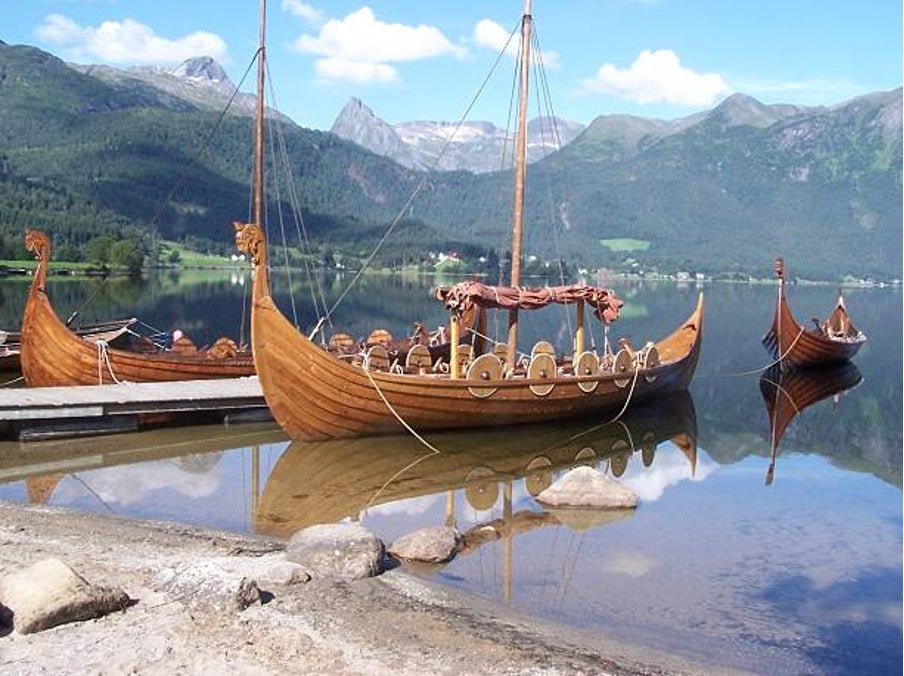

As exceptional seafarers, explorers, raiders, and merchants, much of the Vikings’ legacy today would not have been possible without the aid of longships.
Whatever about the longship was created to facilitate nimble, vibrant movement through the water.
Another essential benefit provided by the longship’s design was the shallow hull, really little of which ever dipped below the waterline. As excellent seafarers, raiders, explorers, and merchants, much of the Vikings’ tradition today would not have actually been possible without the aid of longships.
 Whatever about the longship was created to help with nimble, vibrant movement through the water.
Whatever about the longship was created to help with nimble, vibrant movement through the water.
Viking History: Norse Calendar and Viking Holidays

One of the things that we get asked about most is Norse holidays. Which ones did the Vikings celebrate, how did the Vikings mark them, and how do they relate to…
Viking History: A Guide to Viking Wedding Events

 Viking wedding events are picking up. Many contemporary couples who imagine a back-to-basics ceremony…
Viking wedding events are picking up. Many contemporary couples who imagine a back-to-basics ceremony…
